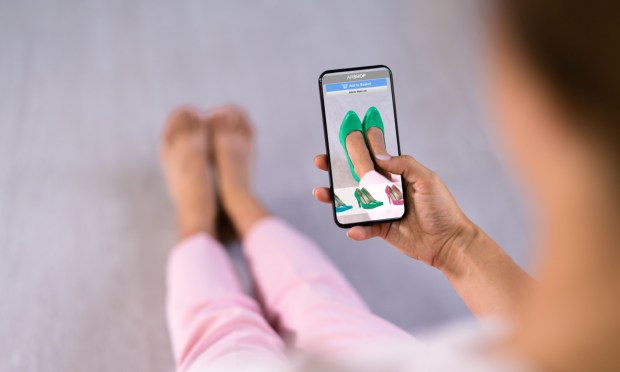Why Google Won’t Be Monetizing Its AI Try-On

As fashion brands continue to lean into virtual try-on (VTO) to drive sales and reduce order returns, Google has looked to call dibs within the space with the launch of its artificial intelligence (AI)-driven VTO feature.
The new feature provides a competitive alternative as it leverages the power of Google’s search engine and is provided free of charge to brands participating in its merchant program, which was announced on Wednesday (June 14).
By leveraging AI and employing diffusion and cross-attention techniques, Google’s VTO combines model and clothing images to generate a realistic visual representation, per the announcement.
The company does not have any plans to monetize this feature, as its intent is to encourage adoption of the service, Google Product Manager Shyam Sunder said in a Glossy report.
However, the data gathered from the try-on tool will play a vital role in enhancing the platform. As more brands and retailers adopt the feature, it will lead to faster improvements and refinements. Sunder worked with multiple brands over the course of the year to understand customers’ preferences and desires, resulting in the development of accurate sizing on human models.
Read more: Google Uses Gen AI to Power Virtual Try-On Tool
Virtual try-on has opened up possibilities and posed challenges for both luxury and mass market brands. Accurately simulating virtual clothing try-on has presented greater difficulties compared to beauty and accessory products, which are relatively simpler to showcase in virtual settings.
Snapchat has made notable progress in the field of virtual try-on, Glossy noted, by enhancing its eCommerce-integrated augmented reality (AR) feature, as showcased through its March update.
See also: Retailers Try on AR to Get More Consumers to Buy
The update enables a more realistic representation of clothes, although the availability of the feature remains limited to a select few fashion brands. Gobi Cashmere, which joined Snap in March, and American Eagle, which conducted a pilot of the feature last year, are among the brands using the technology.
American Eagle CMO Craig Brommers emphasized the importance of reducing the retail return rate, saying even a slight reduction can lead to significant savings.
As of now, Google’s VTO feature allows consumers to exclusively try on tops from prominent brands including Everlane and H&M. Users have the opportunity to experiment with AI-generated models that provide customization choices for skin tones and body sizes within the available options.
To participate in the virtual try-on experience, brands do not need to take any additional actions. As long as they have a merchant center account with a high-quality image featuring a top on a model, their brand is eligible to be a part of this feature, Sunder said, adding that while brands do not need to take any action, “we are certainly always eager to hear feedback.”
For all PYMNTS retail coverage, subscribe to the daily Retail Newsletter.

